How many of you remember your first cycling experience? How many times did you fall before perfecting the art of balancing? Like your journey with your first ride, cycles made a humble and shaky start in Vizag over a century ago and became a part of every household within the blink of an eye. At a time when bullock carts and hand-pulled rikshaws roamed the roads, Kumar Rajah of Bobbili was the torchbearer who introduced bicycles to this beach city. John Castellas, a Vizag heritage enthusiast and aficionado, narrates the tale of how the early 1900s saw a major spike in the usage of cycles.
The year 1898 brought the Industrial Revolution to Vizag in the form of the East Coast Railway which opened its new line from Bezwada to Cuttack and thereby connected Madras to Calcutta via Waltair. Vizag of old relied on horseback, jutkas, bullock carts, horse-drawn carriages and hand-pulled rickshaws to transport travellers to and from their local destinations. That was until the first bicycle was brought to town by the then Kumar Rajah of Bobbili who had ordered a Singer bicycle from England in 1898. Reproduced here is a photograph of Kumar Rajah that was published in the English magazine ‘Cycling: An Illustrated Weekly’ in 1898.
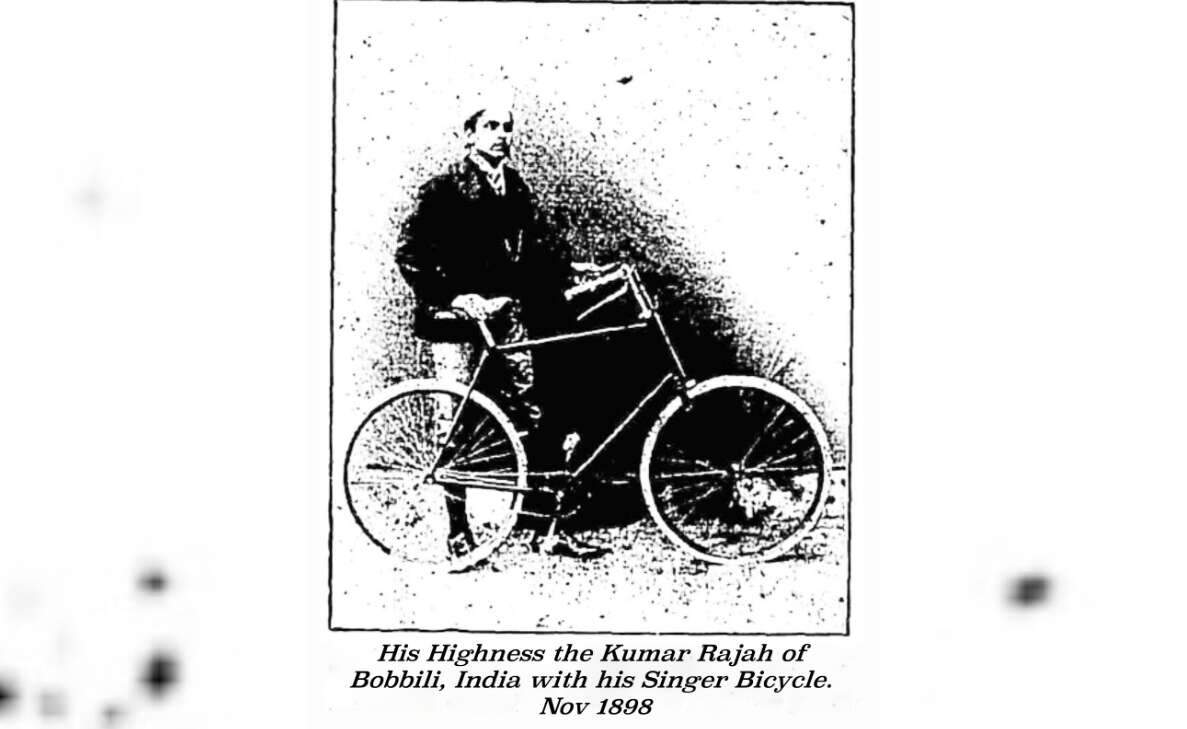 The Singer bicycle was the product of the Singer Machine Company of Coventry, England and was regarded as the biggest manufacturer of bicycles and tricycles. Started by George Singer, the company also manufactured the iconic Singer sewing machines.
The Singer bicycle was the product of the Singer Machine Company of Coventry, England and was regarded as the biggest manufacturer of bicycles and tricycles. Started by George Singer, the company also manufactured the iconic Singer sewing machines.
Man has invented countless things since the dawn of history. It is doubtful if any of them can match the bicycle in beauty and utility. Unlike other machines invented by man, it supplements human effort without supplanting it and is propelled by human energy without being a burden or danger to the environment. It is easy to assemble and maintain. The bicycle progressively became affordable even to the poor especially after manufacturing in India was started.
The bicycle brought a new dimension to social life in the 1900s as not only a means of transport but also a symbol of passing from old ways to new, a novelty, and a new social freedom for the lower to middle classes for whom the bike was precious. Personal mobility was previously limited to those with horse and carriage, however, had limitations to flexibility and distance that a bicycle could overcome.
By 1909, the young Kumar Rajah had developed a taste for better machines and wrote to the Raleigh Machine Co of Nottingham, England, enclosing this photograph of himself on a Raleigh Modelé Superbé that he had bought from them for £15 in 1901.
 The Cycle Trader magazine commented… ‘His Highness is said to have pinned his faith to a Raleigh cross frame with Sturmey-Archer three-speed gear. It is just over nine years since he chose a Raleigh and his faith in the sterling qualities of the all-steel bicycle is such that he is arranging to take a case of machines with him on his return to India.’
The Cycle Trader magazine commented… ‘His Highness is said to have pinned his faith to a Raleigh cross frame with Sturmey-Archer three-speed gear. It is just over nine years since he chose a Raleigh and his faith in the sterling qualities of the all-steel bicycle is such that he is arranging to take a case of machines with him on his return to India.’
At about the same time, the Indian Army placed a large order for Raleigh bicycles to equip its Volunteer Rifle Brigades. The Calcutta and Madras presidencies also ordered Raleigh bicycles for their Mounted Police. By the mid-1900s, the bicycle was a very familiar sight on the streets of India’s cities and towns. The Municipality introduced a tax of Rs 6 per year on bicycles claiming that they were vehicles like a car. Court challenges overturned the tax. The Government persisted with attempting to define bicycles as a mode of transportation like a jutka or cart with an Rs 4 per year tax and this too was dismissed by the courts that equated the bicycle to a horse as a personal mode of transport and not subject to a tax.
Made in India bicycles were popular such as the Sen-Raleigh group of Calcutta, which made four famous brands: Raleigh, Robin Hood, Humber, and Rudge. The Raleigh was highly regarded, as a premium brand and advertised as an all-steel bicycle, was available as black or dark green. Hercules, Phillips and BSA brands made by TI Cycles of Madras matched these. Hercules was considered tougher than Raleigh. There were other brands like Atlas, Armour and Hind, with some local names like Royal Supreme.
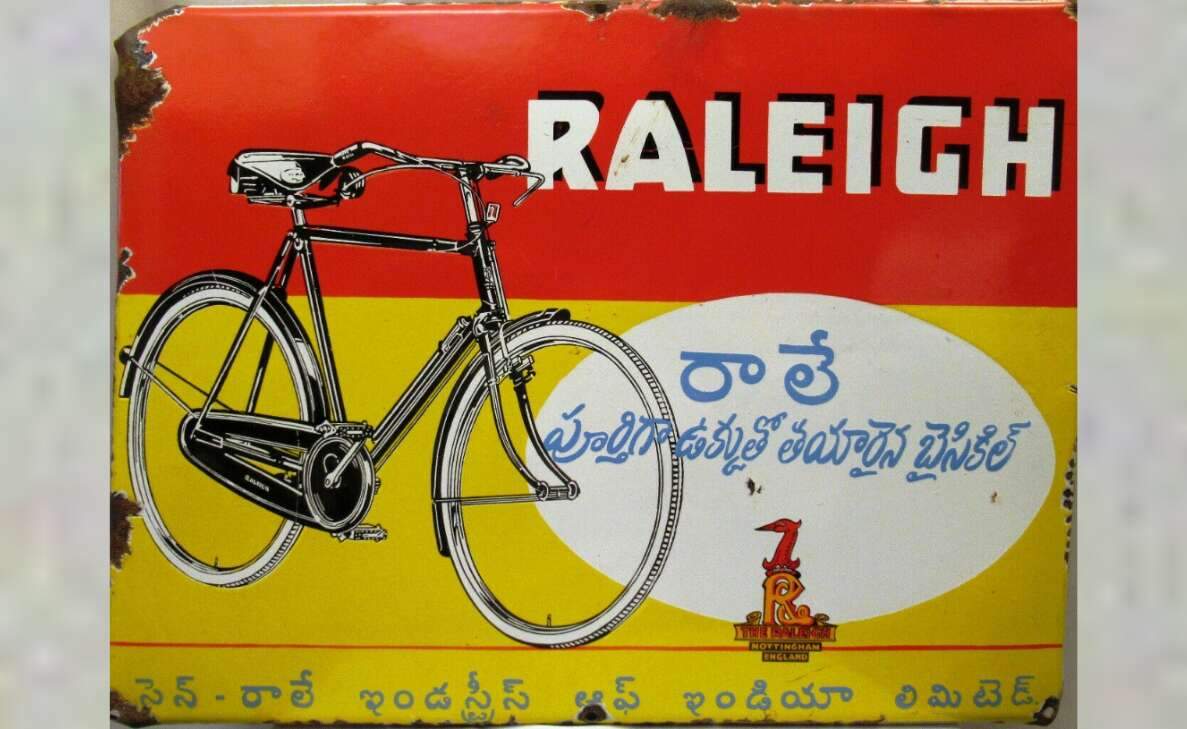
The bicycle became the mainstay of Vizag’s urban transport. Cycle shops were opened in the old town and near St Aloysius High School; Ramana’s Cycle shop sold new and used bicycles and hired bicycles out at 2 annas for one hour. The postman always came on a bicycle, as also did the newspaper delivery. Every office peon rode a bicycle on his errands. Parsons, priests and everyday folk used bicycles to the market, pay visits or transport a child to school. Bikes were prizes for the lucky ticket at the Kamala Three Ring Circus; they were wedding gifts for new bridegrooms and an essential appliance in almost every household. The ubiquitous cycle rickshaw was a direct descendant of the bicycle, becoming the common means of family transport for many decades until the evolution of the auto-rickshaw in the 1970s.
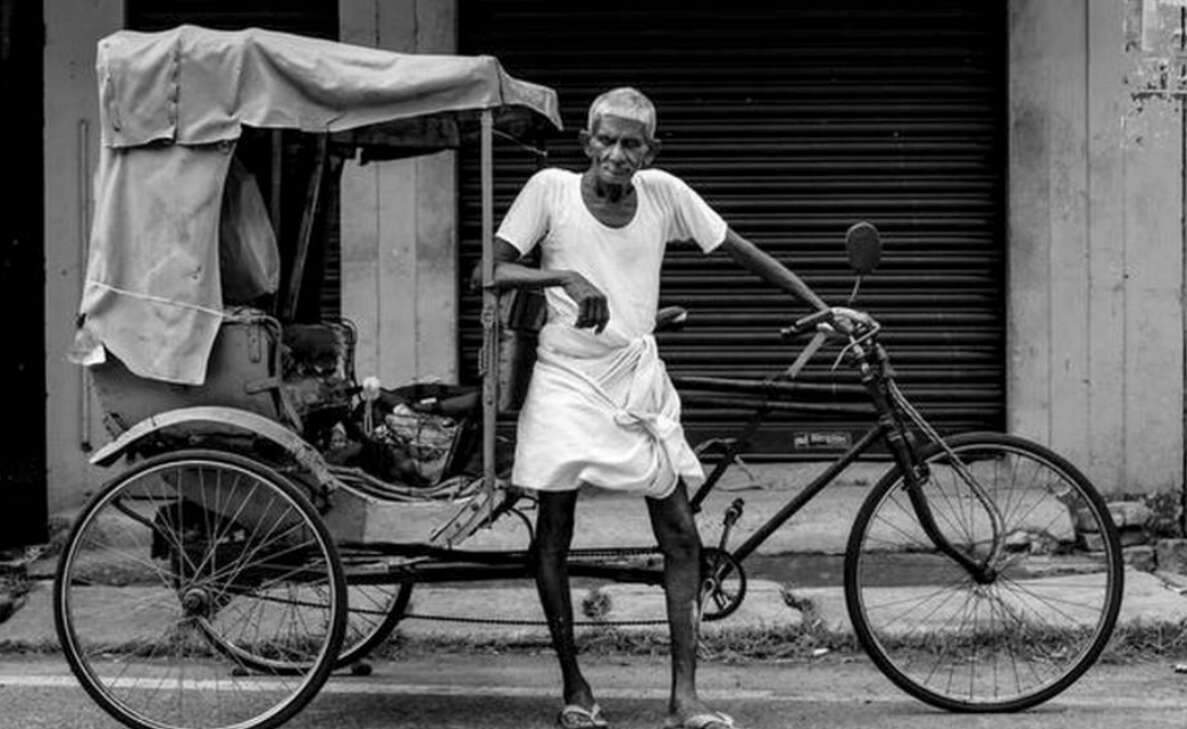
The maidan in old town Vizag is where many a child learned to ride cycles. My instructor was an assistant from Ramana’s Cycle Shop bordering the Maidan. We learned to ride the bicycle when we were about 12 years old and we learned quickly, though not without falls, cuts and bruises. Riding was easy; the essence was getting on the seat, controlling the speed and learning to brake, without losing balance! Slow cycling was an event at our school sports! This cycle shop was the source of many a childhood delight like getting punctures repaired, buying old cycle tyre rubber tubes for the making of catapults and the larger ball bearings which were handy in the endless games of marbles that one played.
On a typical balmy night, when the youth of Vizag would gather at the old Beach Wall to enjoy the moonrise over the Bay of Bengal, they would tell tall tales, sing a popular song or gossip about the latest exploits of local identity. A poet in their midst added to the annals of witty verse from Vizag and it is reproduced here for your amusement.
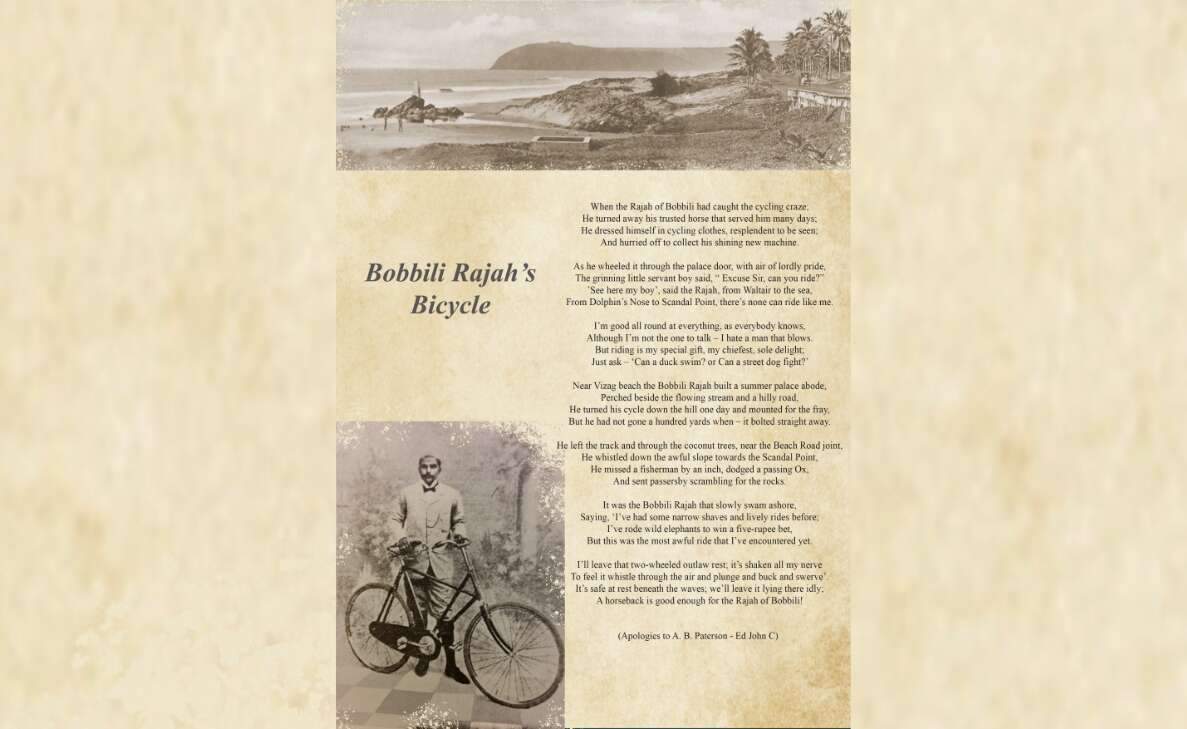 Should you have an anecdote or history on Vizag, the author would appreciate you contacting him at [email protected]
Should you have an anecdote or history on Vizag, the author would appreciate you contacting him at [email protected]
Written by John Castellas whose family belonged to Vizag for five generations. Educated at St Aloysius, migrated to Melbourne, Australia in 1966, former General Manager of Engineering at Boeing & Qantas Airways, in retirement Lecturers in Aviation Management at Swinburne University and is a Vizag aficionado.
Stay tuned to Yo! Vizag website and Instagram for more heritage stories.


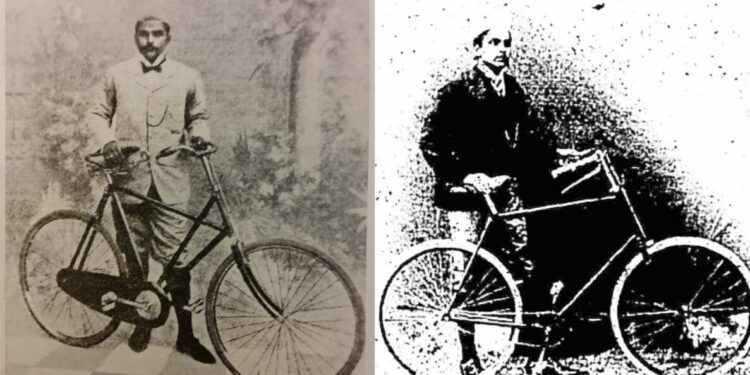







Discussion about this post